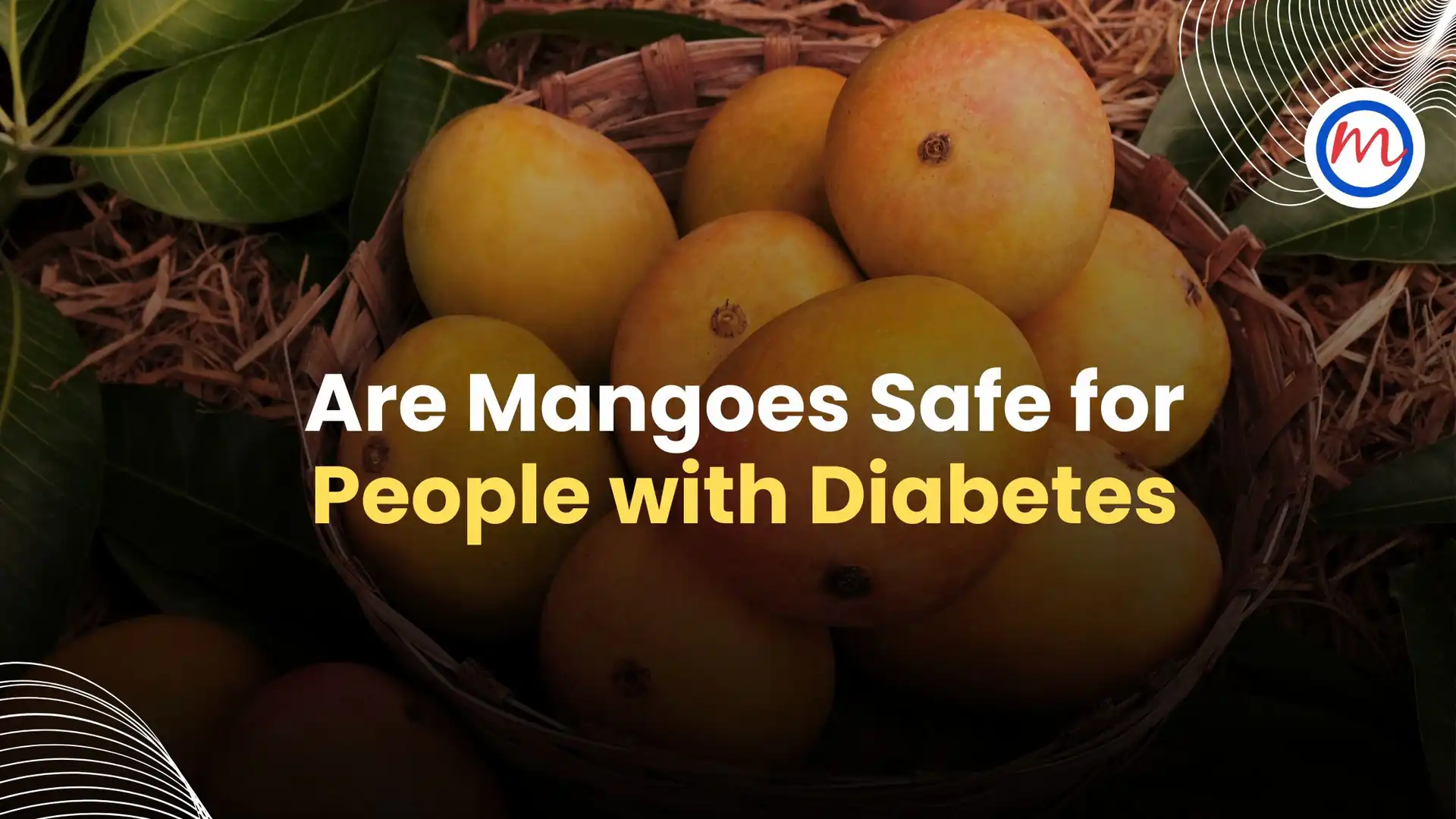Are Mangoes Safe for People with Diabetes? Facts You Need to Know
Mango, the king of fruits, is a beloved part of Indian summers. But people with diabetes often have one important question: “Can I eat mangoes?”
The good news? Yes, you can enjoy mangoes in moderation, with the right portion size, timing and pairing. Here’s a detailed look at how mangoes affect blood sugar and how they can fit into a diabetes-friendly Indian diet.
Understanding Mangoes and Blood Sugar
Mangoes are rich in natural sugars, primarily fructose and glucose. However, they also contain fibre, vitamins A and C, and powerful antioxidants. The concern mainly lies in their glycaemic load when eaten in large quantities or in juiced form.
🔹 Glycaemic Index (GI) of Mango
- The GI of mango is around 51–56, which falls in the low to moderate range.
- Its glycaemic load can increase depending on the ripeness and quantity consumed.
How Much Mango is Safe?
According to experts, individuals with diabetes can include mangoes in their diet in small, controlled portions:
Safe serving size:
- ½ cup (about 50–75 grams) of freshly cut mango, once a day
- Avoid consuming more than this, especially if your blood sugar is not well-controlled.
Best time to eat:
- After a balanced meal or as part of a mid-morning snack
- Not on an empty stomach or before bed
Avoid pairing with:
- Other high-carb foods like rice, sweets, or sugary beverages
Mango Do’s and Don’ts for People with Diabetes
DO:
- Eat fresh mango, not mango pulp or juice
- Pair with a source of protein or fibre (e.g., have mango with a few almonds or after a high-fibre salad)
- Monitor your blood sugar 1–2 hours after eating to assess personal tolerance
DON’T:
- Mix mango with high-sugar fruits like banana or sapota
- Use tinned or processed mango products, including sweetened mango pickles
- “Natural sugar” is always safe—portion control is key
Mango Alternatives for Blood Sugar Control
If your blood sugar levels are not stable, or your doctor has advised caution, consider lower-GI summer fruits such as:
- Guava (with skin)
- Papaya
- Jamun
- Pear
- Pomegranate
You can learn more about diabetes-safe fruits here.
What Does Research Say?
Studies have shown that mango polyphenols, especially in the peel and pulp, have anti-inflammatory and antioxidant properties. Some preliminary research even indicates that mango leaf extracts may have blood sugar-regulating effects, though more studies are needed.
That said, whole ripe mangoes still contain natural sugars, and the portion must be carefully managed.
Final Word
You don’t have to say goodbye to mangoes if you have diabetes. With the right quantity, mindful pairing, and medical guidance, mangoes can be part of a healthy, enjoyable Indian summer diet.
🔗 For a personalised diet chart that includes summer fruits, consult our expert dietitians at:
https://www.drmohans.com/diabetes-nutrition
Keywords: mango and diabetes, can diabetics eat mango, mango glycaemic index, mango portion size, Indian summer fruits for diabetes



